Equity, Diversity, and Inclusion- Is Art the pathway to a Cultural Utopia?
This amazing blog entry is from the PAEA ED&I chair person, Lynette Brown
Equity, Diversity, and Inclusion- Is Art the pathway to a Cultural Utopia?
(The blog consists of excerpts from my personal teacher reflections, inquiries, and presentations.)
“A cultural utopia meaning that every student has a voice in the classroom, school community, and we all (educators, too) can learn about the world by seeing, listening, and connecting to one another, (especially our students).”
As a black woman of color and art educator, every February during Black History Month, I often witness the parade of culturally conscious history and art projects throughout schools and various communities. However, for me, it is a time to reflect and delve deeper into my authentic purpose as a woman of color, artist, and art educator.
Reflections
In 2006, after spending ten years at one of the more challenging public schools in Germantown (Northwest Philadelphia) where school reform, No Child Left Behind, high stake testing and A.Y.P. (adequate yearly progress) were the only motivation for many, except students. My position as the art teacher, the last art teacher was cut as a result of the tumultuous test-driven environment. I was the last “advocate for the arts” and ambassador standing and gone were all of the art programs that once served over 1000 students. Never again at Pickett Middle School would the students paint Afro-centric murals on its walls, perform traditional African dance to the calls, sounds, and beats of distant African tribes, participate in the great theatrical performances like “Purlie” led by Mrs. Pollard and Mrs. Parkinson Hall, and the choir now silent had long sung its final gospel hymn. As the building decayed -so did the arts and its relevance as a new order of education took shape and rose in the city of Philadelphia.
I left a school that used only half of the building and a class filled with supplies and students who soared when being creative. I quickly recovered despite not knowing if the students I left behind did. I took up residency at Alternative Middle Years at James Martin (A.M.Y.) school. A.M.Y. is located in the Port Richmond section of Philadelphia and is quite a different neighborhood from Germantown, historically and culturally.
The opportunity to teach and connect with students from diverse cultures would be a new challenge and opportunity for me to grow and learn as a teacher. My excitement in the weeks leading up to September was un-containable. During my first months of teaching at A.M.Y., I enjoyed watching the social interaction of students and multicultural friendships. I can recall one late October afternoon during the occasional school social, a colleague shared the following statement, “I don’t care what happens out in the real world, I like that we have a perfect cultural utopia here at AMY.” That verbal exchange resonated with me and in me for quite a while. I now began to experience a new level of discontentment. Isn’t A.M.Y -the real world? What made A.M.Y. a cultural utopia? Where are the programs and messages that foster that cultural utopia? What did A.M.Y. have that was not present in the outside world-the real world? Does the school staff model this cultural utopia? Was my colleague seeing the whole picture? Am I missing the picture?
As time progressed the observed multicultural friendships were not enough. I questioned, looked deeper and found that the multicultural message of a perfect cultural utopia was somewhat superficial. The only “authentic” effort to learn about the world by seeing, listening, and connecting to others was being driven by the students in the halls, in the schoolyard before school, and during the lunch period. The diverse student population was only the beginning. Were we (the school staff) doing enough? Where was the share fair day at AMY, which started as a cultural exchange celebration? How could we offer our students a place and voice in the school community? Where was my place and role in regard to the students in this perfect cultural utopia? Can a cultural utopia ever exist?
In the past, I believe that designing lessons that featured the backgrounds or highlighted the history of students represented in my classroom was enough to promote student voice in the classroom. It was my way of promoting equity in the classroom to others from different cultures or ethnic backgrounds. However, through my reflection, I learned that I was presenting student identity from my perspective; it was more of my teacher voice and intent. In response to the on-sought and parade of questions, I began to include more even more culturally relevant classes on my roster and provided students with collaborative projects featuring art from many cultures and lands from a first-person perspective. I once again, as I re-framed my practice to help create a sense of “a cultural utopia”; I embarked on a journey of inquiry using visual journal projects. As I tried new things to teach authentically and created more space for students in the classroom, I began to learn the importance of student voice and it’s affect in the classroom and learning.
My Inquiry Questions
“What occurs when visual journals are used as social commentary for expressing student identity within the school?”
- Can the journaling process create a space for student culture and voice inside the classroom?
- How can I promote more authenticity and originality in student response in their journaling?
- Can exploring identity issues through art journals in the classroom lead to increased student engagement and self- esteem?
- Will the inquiry in my class elicit the type of expression needed for me to learn about who my students really are?
- What is my role in fostering a safe environment to create personal art and expression?
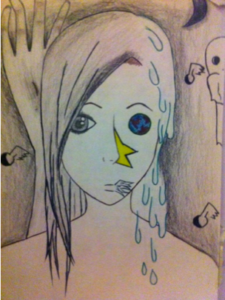
As Mark Berger states in the Culture of Quality chapter in Going Public… “…Elements that have nothing to do with curriculum have the most profound effect on the lives of children… These things are every bit as important as the curriculum.” How can we allow our students voices of identity into the school and class dialogue?
Visual Journal Project Overview
Sampling of Visual Journal Lessons:
- I Am, I Am Not T-shirts
- The Power of Words Illustrations
- Self Portrait with I Am Poem
Through the visual journal project, my students addressed themes such as bullying, prejudices, gender roles in their family, in their culture and the United States, along with the other concerns and issues that adolescents face from other parts of the world. The students discussed their journal projects (visual drawings, interviews, photographs, poetry, narrative writing, research information, etc.) and displayed the art in a final project exhibition for the school-wide community to view.
The purpose of journaling is to record, reflect, or envision, problem-solve, and purge. For years, I have used journals to transition, settle students down, begin a lesson, assess student learning and development, offer an opportunity for students to make mistakes, provide reflection, and deep thought. As years passed, journaling evolved into a larger role in my instruction, teaching, and student learning. I have unexpectedly learned so much about my students’ outside life and thoughts through journals. Often, through student journals that I have had a glimpse into my students’ true identities.
My Conclusions
Students serve as the best authorities on telling their stories. So often, others speak to and for students and make assumptions on what the students’ realities and communities are like to the larger world. As an educator, I learn best from my students firsthand. A cultural utopia meaning that every student has a voice in the classroom, school community, and we all (educators too) can learn about the world by seeing, listening, and connecting to one another, (especially our students). In this cultural utopia, there is respect for learning about the world and one another’s world through inquiry. Seeing our students’ cultural capital allows for valuable learning experiences in the art room and work towards promoting inclusion. This is a way of understanding our students come to our art classrooms with a plethora of valid and valuable experiences, traditions, and knowledge. As every September and February approaches, I once again have recaptured that un-containable excitement knowing that a culturally relevant classroom driven by my diverse student population can move A.M.Y. closer to a cultural utopia.
By Lynette Doreen Brown
Art Teacher, Philadelphia School District
M.ED, N.B.C.T.,
Equity, P.A.E.A. Diversity, and Inclusion Committee, Chairperson

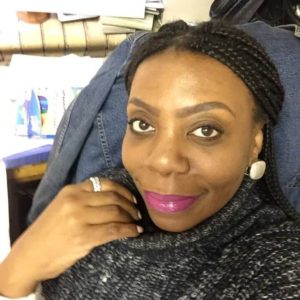
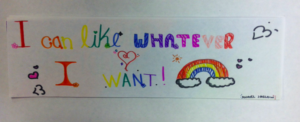

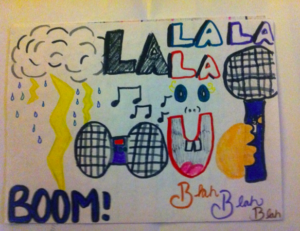
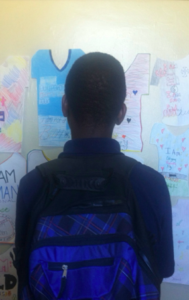 .
. 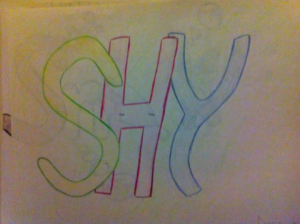
 D5 Creation
D5 Creation